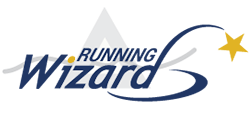
-Dr. Richard Brown, Designer of Lydiard Online Training Programs
The Gold Standard of Training Worldwide
Each Running Wizard plan is formulated on the concept of PHASING to optimize your training. Popularized by the world’s most influential endurance coach of modern times, Arthur Lydiard, this sequential development of your energy systems is the gold standard of coaching worldwide and is the most reliable method to produce peak performances. If you have not been training Lydiard get ready for a quantum leap in your running performance!
Ready to run your best race? Try our Race Time Predictor and see what is possible with Running Wizard.
Choose Your Running Wizard Category
For seasoned runners seeking personal peak performances.
Select Plan$59.95 - $99.95
For those with limited fitness who just want to go the distance.
Select Plan$99.95
For newbies to build up to an hour of continuous running (with race plan option).
Select Plan$29.95 - $39.95





